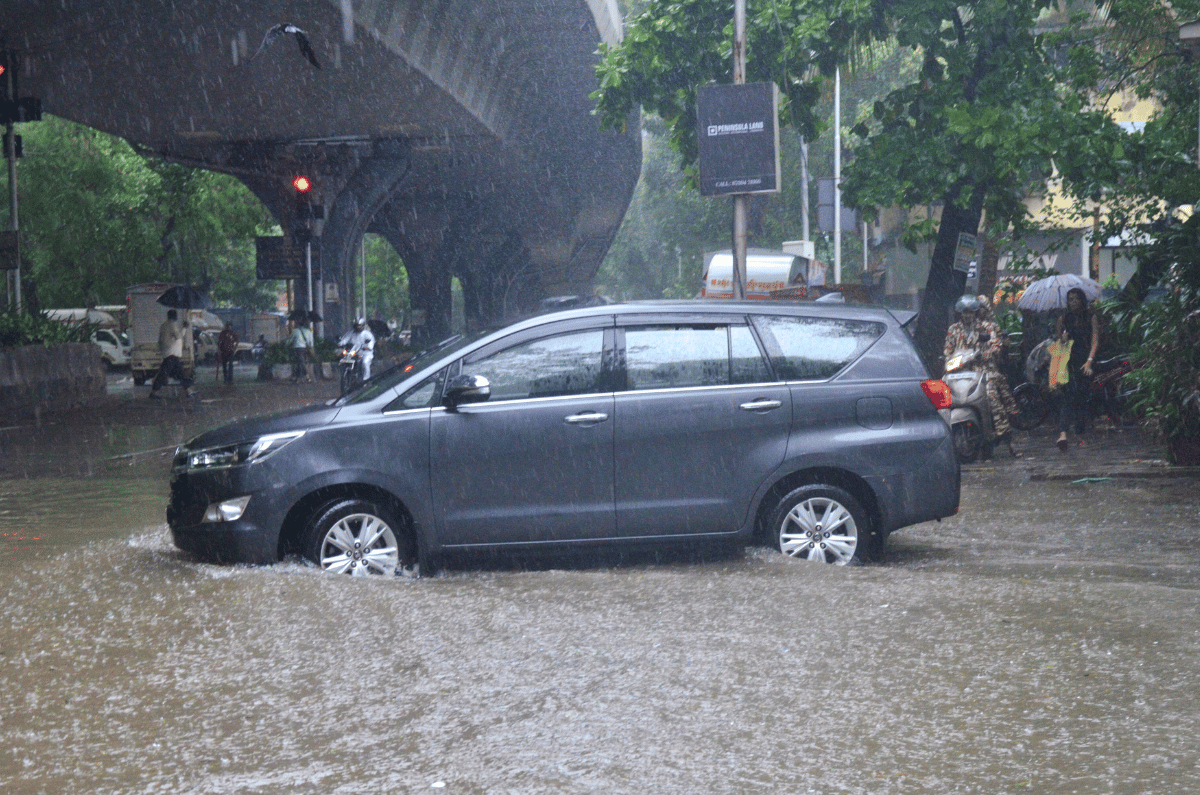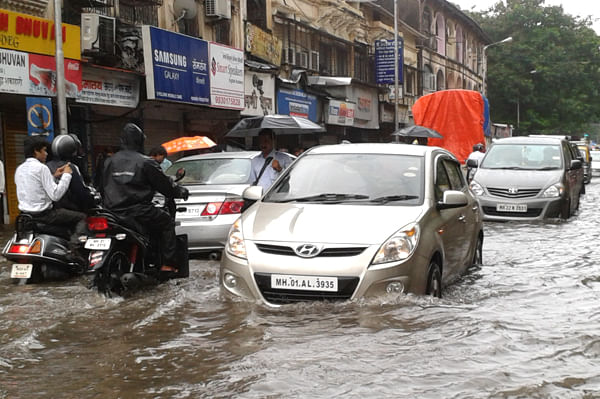
Heavy rains often bring the risk of flooding, especially in cities like Mumbai, where roads and drainage systems struggle to cope with such downpours. This is mainly caused by poor road quality, clogged drains and potholes, which make waterlogging a frequent problem. Here are five important tips to keep in mind when driving through flooded roads.
1. Avoid standing pools of water
Most cars aren’t built to handle over half a foot of water

In general, avoid driving through flooded areas when possible. While some SUVs come with a company-claimed water wading depth, most cars are not meant to be driven through more than half a foot of water. Check Google Maps, talk to people on the road, follow traffic updates on social media or the radio, and be alert while driving to stay away from flooded roads and find alternate routes. Pay attention to other road users (cars, bikes, trucks and pedestrians) to gauge how deep the water is before attempting to wade through.
2. Keep on moving
Use lower gears to prevent stalling

If a flooding situation does arise, do your best to keep moving through the water and don’t stop. Avoid accelerating suddenly or braking too hard; just keep a steady momentum. If the car stops in standing water, there is a chance that water may creep into vital parts like the intake and exhaust. When moving through water, use a lower gear (first, second or third, depending on the speed) and keep the engine revs on the higher side. Wading through water puts additional strain on the engine, and using the third gear, instead of the first, could lead to the car stalling.
3. Do not restart the engine if stalled in water
It can cause serious damage to the block’s connecting rods

In case the car has stalled in a waterlogged area, don’t try to restart it immediately. There are multiple reasons – starting with the water putting more pressure on the engine’s connecting rods, which could lead to them breaking. In addition, if water has entered the engine through the intake or exhaust, it could cause serious engine damage and burn a rather large hole in your pocket when it comes to repairs. If you suspect water has entered the engine, immediately switch off the car to avoid any further damage. Push the car to an area that is not flooded and then call emergency services for help. It’s always wise to keep important contacts on speed dial for quick access.
4. Don’t panic if you get stuck inside
Breaking and escaping via a side window is usually easier than breaking the windshield

When a car is stuck in water, the force that standing water exerts on the doors is much higher than you might think. This could prevent the doors from opening. In such a scenario, the first thing to do is to keep calm and not panic. Then, attempt to open the doors by pushing them with both legs. In case this does not work, use a heavy, blunt object (anything from the headrests to a tyre iron) to break one of the windows. However, don’t try and break the windscreen, as it’s usually far more difficult to break than the door windows. Remember, it’s always safer to ditch a waterlogged car and walk to reach dry ground than attempt it in a submerged vehicle.
5. Pump the brakes once clear of water
Helps to push out any accumulated water

After you’ve successfully cleared a body of water, pumping the brakes will help push out any water that may have accumulated in the area. Water in the brakes naturally hinders proper brake usage. This issue is more prevalent on cars with drum brakes, and considering most models on sale in India have rear drums, this action is recommended.
Also see:

